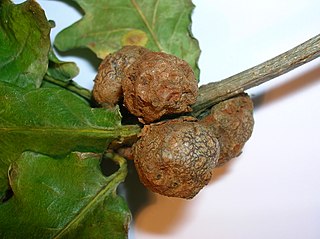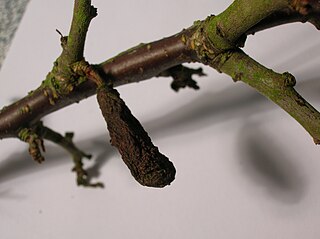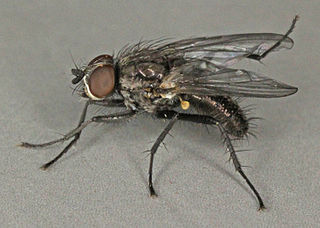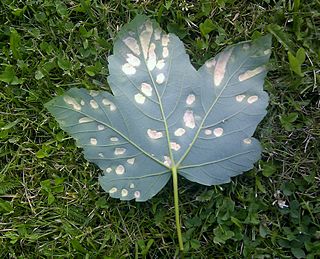
Andricus foecundatrix is a parthenogenetic gall wasp which lays a single egg within a leaf bud, using its ovipositor, to produce a gall known as an oak artichoke gall, oak hop gall, larch-cone gall or hop strobile The gall develops as a chemically induced distortion of leaf axillary or terminal buds on pedunculate oak or sessile oak trees. The larva lives inside a smaller hard casing inside the artichoke and this is released in autumn. The asexual wasp emerges in spring and lays her eggs in the oak catkins. These develop into small oval galls which produce the sexual generation of wasps. A yew artichoke gall caused by the fly Taxomyia taxi also exists, but is unrelated to the oak-borne species. Previous names or synonyms for the species A. fecundator are A. fecundatrix, A. pilosus, A. foecundatrix, A. gemmarum, A. gemmae, A. gemmaequercus, A. gemmaecinaraeformis and A. quercusgemmae.

Cola-nut galls develop as a chemically induced distortion of leaf axillary or terminal buds on pedunculate oak or sessile oak trees, caused by the agamic gall wasp Andricus lignicola which lays single eggs within leaf buds using their ovipositor. A previous name or synonym for the species A. lignicola is A. lignicolus and A. venheurni.

Eriophyes tiliae is a mite that forms the lime nail gall or bugle gall. It develops in a chemically induced gall; an erect, oblique or curved distortion rising up from the upper surface of the leaves of the lime (linden) trees, such as the large-leaved lime tree Tilia platyphyllos, the common lime tree Tilia × europaea, etc.

Taphrina pruni is a fungal plant pathogen of blackthorn that causes the pocket or bladder plum gall, a chemically induced distortion of the fruit (sloes), producing swollen on one side, otherwise deformed and flattened fruit gall without a stone. The twigs on infected plants may also be deformed with small strap-shaped leaves.

Taphrina padi is a fungal plant pathogen that induces the form of pocket plum gall that occurs on bird cherry. The gall is a chemically induced distortion of the fruits, which are swollen, hollow, curved and greatly elongated, without a seed or stone, but retaining the style. The twigs on infected plants may also be deformed with small strap-shaped leaves.

The nettle pouch gall develops in leaf veins, leaf petioles, flower stalks and sometimes the stem of Urtica dioica and Urtica urens. This structure is caused by the gall midge or gnat Dasineura urticae, also spelled Dasyneura urticae. Synonyms are Perrisia urticae and Cecidomyia urticae.

Dasineura crataegi, the hawthorn button-top gall-midge, is a dipteran gall-midge. It causes the hawthorn button-top gall, which develops in the terminal shoots of common hawthorn, Crataegus monogyna Jacq., Midland hawthorn C laevigata (Poir.) DC and their hybrid, C × media Bechst. Synonyms are Perrisia crataegi and Cecidomyia crataegi.

Chirosia betuleti is a species of fly, which causes knotting gall in ferns. The gall develops in the terminal shoots of ferns, such as broad buckler fern, male fern, lady fern, and ostrich fern.

Phytoptus avellanae is an acarine gall-mite species inducing big bud galls of up to 10 millimetres (0.39 in) across, sometimes slightly open, on the buds of hazel and on filbert. Synonyms include Phytocoptella avellanae, Eriophyes avellanae, Calycophthora avellanae, Phytoptus coryli, Phytoptus pseudogallarum, and Acarus pseudogallarum. The mites are white, about 0.3 mm long, with numerous tergites and sternites. Two forms of P. avellanae exist, a gall causer and a vagrant form that has a more complex life-cycle and does not form galls.

Eriophyes inangulis is a mite that forms the alder vein angle gall. It develops in a chemically induced gall; a sub-spherical distortion rising up from the upper surface of the leaves of alder trees Alnus glutinosa along the midrib. Synonyms are Eriophyes laevis inangulis, Phytoptus laevis, and Cephaloneon pustulatum.

Phyllocoptes eupadi is a mite that chemically induces a pouch gall to develop as a sub-spherical distortion rising up from the upper surface of the lamina of leaves of blackthorn shrubs Prunus padus, Prunus spinosa and other Prunus species. Synonyms are Phytoptus padi Nalepa, 1890 and "Eriophyes padi ", non Eriophyes padi Domes, 2000.

Aceria pseudoplatani causes the sycamore felt gall that is found on the leaves of sycamores or Norway maple, and is caused by an acarine gall-mite.

Dasineura is a genus of midges in the family Cecidomyiidae, some of which cause galls on plants such as Dasineura crataegi on hawthorn and Dasineura fraxinea on ash.

Psyllopsis fraxini is a psyllid which lives within a gall on ash.

Aculus magnirostris is a species of mite which causes galls on the leaves of willows. It was first described by Alfred Nalepa in 1892.

Aculus laevis is a species of mite which causes galls on the leaves of sallows. It was first described by Alfred Nalepa in 1892.
Aceria iteina is a species of mite which causes galls on the leaves of sallows and their hybrids. It was first described by Alfred Nalepa in 1925.

Dasineura fraxini is a gall midge which forms galls on the leaves and petioles of ash. It was first described by Johann Jacob Bremi-Wolf in 1847.
Dasineura acrophila is a gall midge which forms galls on the leaves of ash. It was first described by Johannes Winnertz in 1853 and is found in Europe.

Aceria campestricola, is a species of mite in the family Eriophyidae. The mite causes galls on the leaves of elms and was described by Georg Ritter von Frauenfeld in 1865.


















